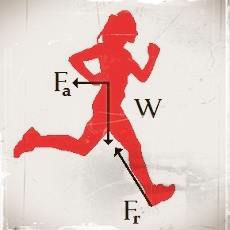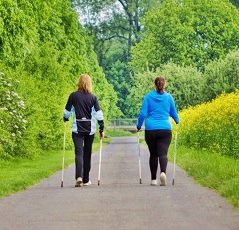Brown Fat (Brown Adipose Tissue): benefits, activation
A guide to BAT
Fact Checked
×All the content published in our website is fact checked to validate its accuracy.
Visit our guidelines web page to learn more about our strict processes regarding how we review our content's sources: reliable and reputable journals, media websites, universities, colleges, organizations, and professionals.
Our articles are based on scientific evidence, and the references are included in its footnotes, which are clickable links to sound scientific papers.
First published: 07.Oct.2023
Overview
Brown adipose tissue or BAT is a special kind of fat, that helps keep you warm without shivering and burns calories in the process. It can be also be activated by exercise, eating, fasting, and restricting calories. Certain natural food ingredients found in peppers, turmeric, garlic, grapes, and green tea can also activate BAT or "brown" regular white adipose tissue to increase the body's resting energy otuput.
Brown fat decreases with age yet it has a great potential to prevent obesity and the metabolic diseases associated with it (inflammation, insulin resistance and heart disease). This article explores what it is, and how to activate it.
References and Further Reading
(1) Ballinger MA, Andrews MT. (2018). Nature's fat-burning machine: brown adipose tissue in a hibernating mammal. J Exp Biol. 2018 Mar 7;221(Pt Suppl 1):jeb162586. doi: 10.1242/jeb.162586. PMID: 29514878
(2) Claessens-van Ooijen AM, Westerterp KR, Wouters L, Schoffelen PF, van Steenhoven AA, van Marken Lichtenbelt WD. (2006). Heat production and body temperature during cooling and rewarming in overweight and lean men. Obesity (Silver Spring) 2006;14:1914-1920 https://onlinelibrary.wiley.com/doi/full/10.1038/oby.2006.22
(3) Lee P, Smith S, Linderman J, Courville AB, Brychta RJ, Dieckmann W, Werner CD, Chen KY, Celi FS. (2014). Temperature-acclimated brown adipose tissue modulates insulin sensitivity in humans. Diabetes. 2014 Nov;63(11):3686-98. doi: 10.2337/db14-0513. Epub 2014 Jun 22. PMID: 24954193
(4) Machado, S.A., Pasquarelli-do-Nascimento, G., da Silva, D. et al. (2022). Browning of the white adipose tissue regulation: new insights into nutritional and metabolic relevance in health and diseases. Nutr Metab (Lond) 19, 61 (2022). https://doi.org/10.1186/s12986-022-00694-0
(5) Kanazawa S. (2015). Does global warming contribute to the obesity epidemic?. Environ Res. 2020 Mar;182:108962. doi: 10.1016/j.envres.2019.108962. Epub 2019 Dec 6. PMID: 31862545
(6) Stanford KI, Middelbeek RJ, Goodyear LJ. (2015). Exercise Effects on White Adipose Tissue: Beiging and Metabolic Adaptations>. Diabetes. 2015 Jul;64(7):2361-8. doi: 10.2337/db15-0227. Epub 2015 Jun 7. Erratum in: Diabetes. 2015 Sep;64(9):3334. PMID: 26050668
(7) Halpern B, Mancini MC, Bueno C, Barcelos IP, de Melo ME, Lima MS, Carneiro CG, Sapienza MT, Buchpiguel CA, do Amaral FG, Cipolla-Neto J. (2019). Melatonin Increases Brown Adipose Tissue Volume and Activity in Patients With Melatonin Deficiency: A Proof-of-Concept Study. Diabetes. 2019 May;68(5):947-952. doi: 10.2337/db18-0956. Epub 2019 Feb 14. PMID: 30765337
(8) Aouichat S, Raya E, Molina-Carballo A, Munoz-Hoyos A, Aloweidi AS, Elmahallawy EK, Agil A. (2022). Dose-Dependent Effect of Melatonin on BAT Thermogenesis in Zücker Diabetic Fatty Rat: Future Clinical Implications for Obesity. Antioxidants (Basel). 2022 Aug 25;11(9):1646. doi: 10.3390/antiox11091646. PMID: 36139720
(9) Li G, et al. (2017). Intermittent Fasting Promotes White Adipose Browning and Decreases Obesity by Shaping the Gut MicrobiotaCell Metab. 2017 Oct 3;26(4):672-685.e4. doi: 10.1016/j.cmet.2017.08.019. Epub 2017 Sep 14. Erratum in: Cell Metab. 2017 Nov 7;26(5):801. PMID: 28918936
(10) Salvatore Fabbiano, Nicolas Suárez-Zamorano, Dorothée Rigo, Christelle Veyrat-Durebex, Ana Stevanovic Dokic, Didier J. Colin, Mirko Trajkovski, (2016). Caloric Restriction Leads to Browning of White Adipose Tissue through Type 2 Immune Signaling. Cell Metabolism, Vol 24:3, 2016, p434-446, ISSN 1550-4131, https://doi.org/10.1016/j.cmet.2016.07.023
(11) Masayuki Saito, Mami Matsushita, Takeshi Yoneshiro, Yuko Okamatsu-Ogura, (2020). Brown Adipose Tissue, Diet-Induced Thermogenesis, and Thermogenic Food Ingredients: From Mice to Men. Front. Endocrinol., 21 April 2020 Sec. Obesity Volume 11 - 2020, https://doi.org/10.3389/fendo.2020.00222
(12) Sugimoto, S., Mena, H.A., Sansbury, B.E. et al. (2022). Brown adipose tissue-derived MaR2 contributes to cold-induced resolution of inflammation. Nat Metab 4, 775–790 (2022)
About this Article
Brown Fat (Brown Adipose Tissue): benefits, activation, A. Whittall
©2023 Fit-and-Well.com, 07 Oct. 2023. Update scheduled for 07 Oct. 2025. https://www.fit-and-well.com/health/brown-adipose-tissue-what-is-it.html
Tags: Brown Adipose Tissue, microbiome, weight loss, melatonin, circadian, intermittent fasting



